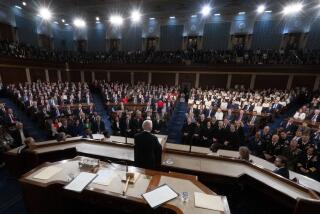The roads to prosperity
In his Dec. 6 radio address, President-elect Barack Obama vowed to “create millions of jobs by making the single largest new investment in our national infrastructure since the creation of the federal highway system in the 1950s.” The story of President Eisenhower’s decision in 1956 to create the interstate highway system, how it was funded and its effects on American commerce and culture holds lessons that the new president and the country would do well to heed.
Eisenhower was the first Republican to occupy the White House after Herbert Hoover, who in the 1950s still wore a mantle of shame for his role in the market crash of 1929 and its aftermath. Eisenhower had an almost pathological, but healthy, fear that he might be blamed for allowing the nation to fall into another depression. When a mild recession early in his first term pushed the unemployment rate above 5%, Eisenhower told his Cabinet that “we could be in terrible trouble” and asked for solutions.
The highwaymen at the Bureau of Public Roads (the precursor of today’s Federal Highway Administration) heeded the call. They reported that each federal dollar invested in construction generated close to one half-hour of employment. Like a stone cast into a pond, a mile of modern, four-lane, limited-access highway would create waves that would ripple through the economy. Workers across America, not just those who built the roadways, would benefit -- in cement and steel plants (50 tons of concrete and 20 tons of reinforcing steel go into each mile), in paint and sign manufacturers and in heavy equipment factories and oil refineries.
Another impetus for the massive project was that the president knew firsthand the need for better roads. As a young lieutenant colonel, he traveled in 1919 over the Lincoln Highway in the Army’s first transcontinental caravan, a journey that lasted 62 days and sometimes required oxen to pull the trucks through mires of mud. Eisenhower called it a trip “through darkest America in truck and tank.” A quarter of a century later, a ride over Adolf Hitler’s autobahn showed the general how highways might serve the defense of a nation.
Eisenhower realized that he could not fail with highways. Americans wanted more roads for their postwar cars. Construction would prime the economic pump (1950s language for “economic stimulus package”) and help secure the nation’s future. He signed a small highway bill in 1954 and, on June 29, 1956, the $25-billion Federal-Aid Highway Act to build a 42,000-mile interstate highway system by 1972. Ultimately the cost would escalate to more than $130 billion, and workers would not finish the roads until 1993, with the Century Freeway in Los Angeles County as the last link.
Eisenhower wasn’t afraid to create a huge public works program, and unlike today’s presidents, he wasn’t afraid of taxes. (He even vetoed his Republican Congress’ repeal of a 20% federal admission tax on motion pictures.) The 1956 highway bill levied a tax of 3 cents on each gallon of fuel -- equal to 24 cents today. The revenue went into a dedicated highway trust fund. Though it wasn’t enough to support the entire program, it was a start. And the tax proved to be a Mobius strip of money. Each gallon of fuel pumped helped to create more highways, which enabled more cars to drive more miles -- and use more gas, which generated yet more money for the trust fund.
Eisenhower’s interstates also changed the face of the nation. In the 19th century, each of the stops on the railroad as it pushed westward became an opportunity for a community and commerce to develop. Today, 16,000 interchanges on the interstates have had a similar effect on our economy and our lives. Eisenhower’s interstates are an essential part of our culture.
The highway system, though, also would have deleterious effects, which Eisenhower probably couldn’t have foreseen. He didn’t know, for instance, that rapacious planners like New York’s Robert Moses would plunder urban neighborhoods and displace thousands to lay down roads. He didn’t foresee that the interstates would contribute in large measure to the United States’ dependence on automobiles and foreign oil.
In 1956, Eisenhower likely didn’t fully realize that he was creating not just a public works program but an economic and social blueprint for the next 50 years. Now, along with every other aspect of our infrastructure, the interstates are crumbling. Irresponsible legislators rail against the current federal highway tax of 18.4 cents a gallon -- far less in today’s prices than Eisenhower’s 3 cents. Seduced by easy money, governors consider leasing parts of the highway system to foreign companies.
So the lessons for Obama are clear: Don’t be afraid to propose bold -- and often expensive -- programs that improve the nation’s infrastructure and peoples’ lives, and don’t be afraid to pay for them with taxes.
It is said the 44th president is taking office at a Lincoln moment and a Roosevelt moment. True enough, but it can be an Eisenhower moment as well.
More to Read
Get the L.A. Times Politics newsletter
Deeply reported insights into legislation, politics and policy from Sacramento, Washington and beyond. In your inbox three times per week.
You may occasionally receive promotional content from the Los Angeles Times.










